
The Mukden Incident was a false flag event staged by Japanese military personnel as a pretext for the 1931 Japanese invasion of Manchuria.

Kenji Doihara was a Japanese army officer. As a general in the Imperial Japanese Army during World War II, he was instrumental in the Japanese invasion of Manchuria.

Manchuria Aviation Company was the national airline of Manchukuo.

The Battle of Rehe was the second part of Operation Nekka, a campaign by which the Empire of Japan successfully captured the Inner Mongolian province of Rehe from the Chinese warlord Zhang Xueliang and annexed it to the new state of Manchukuo. The battle was fought from February 21 to March 1, 1933.

Zhang Jinghui ; was a Chinese general, warlord and politician during the Warlord era. He is noted for his role in the Japanese puppet regime of Manchukuo in which he served as its second and final Prime Minister.

The Manchukuo Imperial Army was the ground force of the military of the Manchukuo, a puppet state established by Imperial Japan in Manchuria, a region of northeastern China. The force was primarily used for fighting against Communist and Nationalist guerrillas in Manchukuo but also took part in battle against the Soviet Red Army on several occasions. It initially consisted of former National Revolutionary Army troops of the "Young Marshal" Zhang Xueliang who were recruited after the Japanese invasion of Manchuria en masse, but eventually expanded to include new volunteers and conscripts. The Imperial Army increased in size from about 111,000 troops in 1933 to an estimated strength of between 170,000 and 220,000 soldiers at its peak in 1945, being composed of Han Chinese, Manchus, Mongols, Koreans, Japanese, and White Russians. Throughout its existence the majority of its troops were considered to be mostly unreliable by their Japanese officers and advisers, due to poor training and low morale.
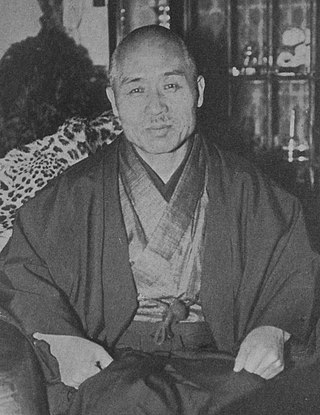
General BaronShigeru Honjō was a general in the Imperial Japanese Army during the early period of the Second Sino-Japanese War. He was considered an ardent follower of Sadao Araki's doctrines.

The Jiangqiao campaign was a series of battles and skirmishes occurring after the Mukden Incident, during the invasion of Manchuria by the Imperial Japanese Army, prior to the Second Sino-Japanese War.
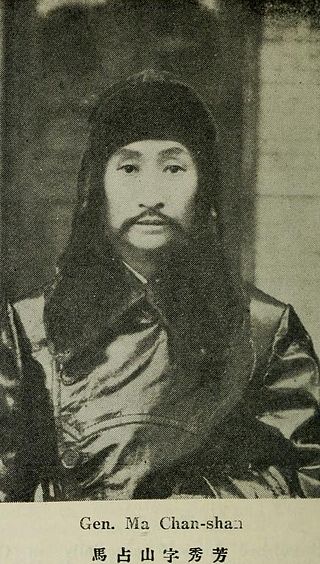
Ma Zhanshan was a Chinese general famous for resisting the Japanese invasion of Manchuria. Ma was placed in charge of the Northeastern Army in Heilongjiang Province during the invasion and ignored orders from the central government not to resist the Japanese. He became a national hero in China by fighting the unsuccessful but highly symbolic Jiangqiao campaign against the Kwantung Army's advance into Heilongjiang. After his defeat, he feigned defection to the Japanese and was appointed Minister of War in the new Japanese puppet state of Manchukuo. He then joined and took command of the guerrilla campaign against Japanese occupation, taking with him large amounts of supplies, funds, and military intelligence. Ma Zhanshan rejoined the Northeastern Army after the guerilla movement was largely defeated. He continued to oppose Chiang Kai-shek's policy of non-resistance and supported the Xi'an Incident that forced Chiang to form the Second United Front with the Chinese Communist Party (CCP). He commanded several units in the National Revolutionary Army during the Second Sino-Japanese War while covertly cooperating with the CCP. Ma avoided direct participation in the postwar Chinese Civil War and eventually defected the Communists, dying a year later in 1950.
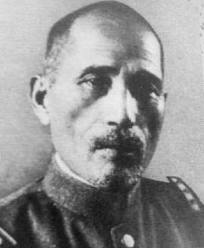
Taka Hishikari was a general in the Imperial Japanese Army.

The Empire of Japan's Kwantung Army invaded Manchuria on 18 September 1931, immediately following the Mukden Incident. At the war's end in February 1932, the Japanese established the puppet state of Manchukuo. Their occupation lasted until the success of the Soviet Union and Mongolia with the Manchurian Strategic Offensive Operation in mid-August 1945, towards the end of the Second World War.
The Defense of Harbin occurred during the early Second Sino-Japanese War, as part of the campaign of the Invasion of Manchuria by forces of the Empire of Japan from 25 January to 4 February 1932.

Jirō Tamon was a lieutenant general in the Imperial Japanese Army in the early Second Sino-Japanese War. He was noted as the commander in many of the operations of the invasion of Manchuria.

The Pacification of Manchukuo was a Japanese counterinsurgency campaign to suppress any armed resistance to the newly established puppet state of Manchukuo from various anti-Japanese volunteer armies in occupied Manchuria and later the Communist Northeast Anti-Japanese United Army. The operations were carried out by the Imperial Japanese Kwantung Army and the collaborationist forces of the Manchukuo government from March 1932 until 1942, and resulted in a Japanese victory.

The 2nd Division was an infantry division in the Imperial Japanese Army. Its tsūshōgō was Courageous Division.
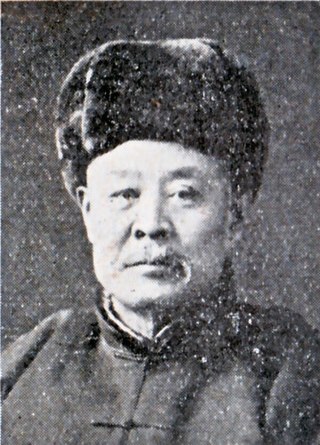
Zhang Haipeng, was a Chinese Northeastern Army general, who went over to the Japanese during the Invasion of Manchuria and became a general in the Manchukuo Imperial Army of the State of Manchuria.

Aisin-Gioro Xiqia (Aisin-Gioro Hsi-hsia; Chinese: 愛新覺羅·熙洽; pinyin: Àixīnjuéluó Xīqià; Wade–Giles: Ai4-hsin1-chüeh2-lo2 Hsi1-ch'ia4; 1883–1950), commonly known as Xi Qia or Xi Xia (Hsi Hsia; Chinese: 熙洽; pinyin: Xīqià; Wade–Giles: Hsi1-hsia4; Hepburn: Ki Kō), was a general in command of the Kirin Provincial Army of the Republic of China, who defected to the Japanese during the Invasion of Manchuria in 1931, and who subsequently served as a cabinet minister in Manchukuo.

Zang Shiyi was a Chinese general and Governor of Liaoning Province at the time of the invasion of Manchuria in 1932.

Yu Zhishan, was a military officer under the Beiyang Government and the Fengtian clique, subsequently becoming a cabinet minister in Manchukuo.
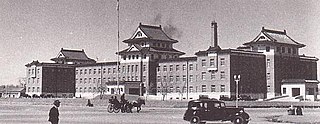
The Kwantung Army was a general army of the Imperial Japanese Army from 1919 to 1945.


















